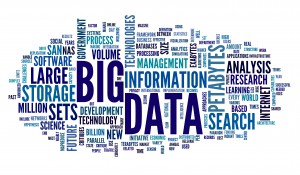Big Data
What is big data?
Big data is a rapidly growing topic that will only gain more importance as technology progresses. This refers to the massive amounts of data collected by companies to keep track of trends and records. Big data sources come from many aspects of the business including transactions, social media, and web presence. Big data can be also be described by “The Three V’s” volume, velocity, and variety. With the amount of data out there being collected, it can be overwhelming to connect all the pieces and figure out what it all means. However, it is crucial to take control of this data to better understand your customers and area of business. 
Big data serves no purpose unless the company knows how utilize it. Studying big data correctly can streamline your business and help you make risky decisions. Proper use of big data can also minimize costs, create a more efficient workflow, and allow the company to dive into a new market if they predict a trend.
Examples of Big Data
An example of big data being utilized can be seen in the health care industry. By keeping track of the patient’s records, prescriptions, and particular treatments, health care services can be more effective in treating patients. It also helps them predict trends with certain diseases and illnesses. This information is very useful to have in a fast paced and sometimes unpredictable environment. Another example is seen in sports organizations. The organization can look at ticket purchases, social media content, and mobile data from fans to make the experience more personal. By analyzing this data they are able to personalize promotions and communications for their fans making a more enjoyable experience.
Big Data in MIS

To help make sense of big data, companies use special tools and software to display something meaningful from the data. I have been exposed to some of these tools in my MIS Data Analytics class, particularly using R, which is a programming language used to analyze data sets. I used different methods such as association rule mining, clustering, decision trees, and dimensional data modeling to help examine data. All of these tools helped me make predictions and draw conclusions from big data sets.
References:
Arthur, Lisa. “What Is Big Data?” Forbes. 15 Aug. 2013. Web. 21 Apr. 2016. <http://www.forbes.com/sites/lisaarthur/2013/08/15/what-is-big-data/#45934cb23487>.
Matterson, Scott. “Big Data Basic Concepts and Benefits Explained.” Tech Republic. 25 Sept. 2013. Web. 21 Apr. 2016. <http://www.techrepublic.com/blog/big-data-analytics/big-data-basic-concepts-and-benefits-explained/>.
“Big Data: What It Is and Why It Matters.” SAS. Web. <http://www.sas.com/en_us/insights/big-data/what-is-big-data.html>.

